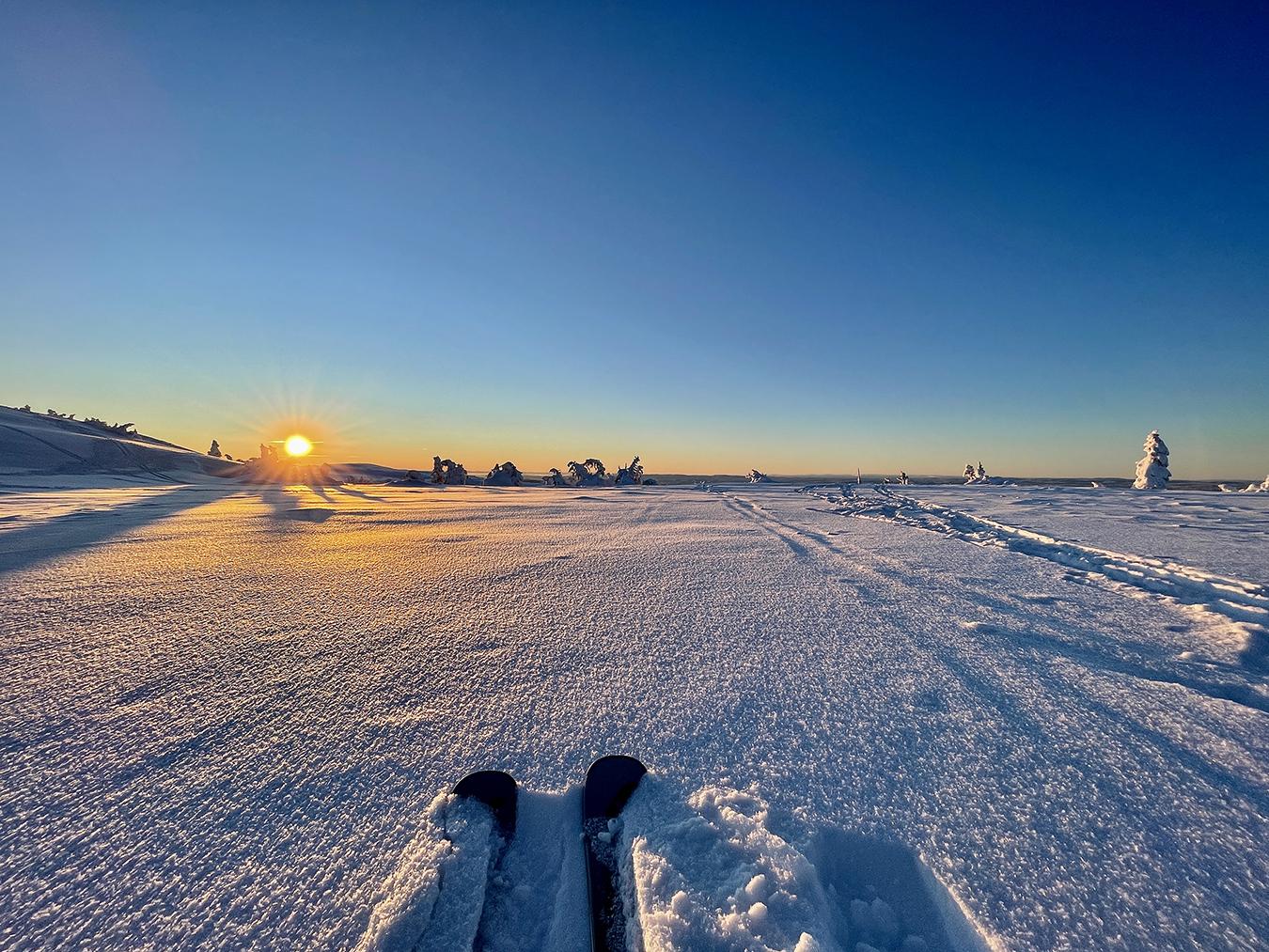How we produce snow in Hafjell
HAFJELL, At most under optimal conditions we can produce five truckloads of snow per minute, but there are many factors that come into play before snow production can be started.
The main ingredients to produce snow are compressed air and high pressure water in large quantities. In Hafjell, we use three types of snow cannons, and what they all have in common is that water is forced under very high pressure through a number of nozzles that atomize the water. In some of these nozzles, the water is mixed with compressed air to start the freezing process. WE have two types of fan cannons and a lance cannon. We will explain these a little further down.
For it to snow, we need an effective temperature below -2.5. The higher the humidity, the more cold is needed to be able to produce. The main rule is that you need between -5 and -10 degrees for 7 days to be able to open (a little depending on the length and width of the ground).
Fan cannon
These can be fixed or mobile and are transported around the facility with preparation machines. We have several of these in Hafjell, and some can blow 70 meters into the ground. For example, one of these fan guns is called T40 (as shown in the picture). What they all have in common is that they have a large fan at the back which means that the water droplets from the nozzles furthest forward on the cannon are blown 20-40 meters into the ground. The time the water droplets, and eventually the snow crystals, are in the air is decisive for how much can be produced.
Lance cannons
We also have something called lance cannons. These are long lances of 6 meters fixed along the slopes.
The lance cannons are of the V3 type. This type of cannon is used on most of the trails in the northern part of the facility. On these, water and air pressure throw the water drops/snow crystals into the ground. These cannons have less capacity and range than a fan cannon, so the distance between each lance cannon is shorter. You need approximately three lance cannons to produce the same amount of snow as one large fan cannon.
Optimal conditions
The best conditions for snow production are -10 degrees and clear weather, which often provides dry air. The amount of snow thus depends on the temperature, so even if the snow guns are going full blast in the mountains, the number of cubic meters of snow will vary a lot depending on how many effective degrees of cold we have.
The largest fan guns can produce up to 100 m3 of snow per hour under absolutely optimal conditions. In marginal temperature conditions, the same cannon will be able to produce down to 5-10 m3 per hour.
In most of the main routes in Hafjell, the snow cannons are fixed along the side of the slopes. These cannons have a central control system and can produce snow "automatically" when the temperature conditions permit. This makes snowmaking more efficient, and we get a more even snow quality even if the temperature varies during the day. In 2015, in connection with the construction of the National Facility in Hafjell, the snow production was significantly upgraded with this automatic facility. The amount of water is thus adjusted according to the temperature outside, so that the quality is overall smoother and better.
In total, snow production covers 90% of all routes in Hafjell Alpinsenter.
Water capacity
Our main source of water is Reinsvatn, a water located between Nevelfjell and Reinsfjell in Øyerfjellet, and is approx. 3.8 square kilometers. Water is also taken from Moksjøen, which is a little further north. In the past, water was also taken from Gudbrandsdalslågen, but this was removed when the water plant was built from Reinsvatn. The reason for changing the main source was both because of capacity, but also for environmental reasons.
When the snow system is running at full capacity with us, we can produce up to 60 cubic meters of snow per minute. That corresponds to a total of five full lorry loads!
Then there are many who wonder why not all the cannons go off when it's cold. It is the case that we do not have enough water to run all guns equally at low temperatures. Therefore, priority is given to the slopes and slopes that will open first, typically at the top of the mountain and the main routes. The production is then extended to the rest of the trail network, and normally we also get good help from the natural snow when we get to the turn of the month November - December.
Under normal weather conditions, all main slopes, children's areas and terrain parks are ready for Christmas.

